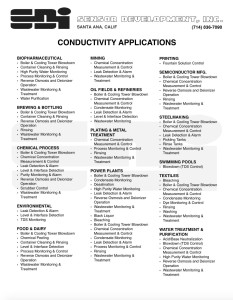
Bubbles, the underestimated enemy.
Bubbles on the surface of the electrodes are a common, but little appreciated problem. Trapped bubbles cause the conductivity readings to be unstable, and lower than expected. Click the link below to find out how to quickly check for bubbles, their sources, and ways to limit their impact below. Explore more on this topic by clicking the link below and contact the factory if you have any questions.
 June 8th, 2020
June 8th, 2020 admin
admin
-
 Conductivity Theory
Conductivity Theory
-
 0 Comments
0 Comments
Sensor Selection Guide
Each type of conductivity sensor has certain applications for which it is best suited and some of that is addressed in the sensor selection guide below. Standard sensors are manufactured from 316L stainless steel electrodes. In most cases the electrodes are available in other materials upon request including; titanium, Monel, and Hastelloy-C. Standard insulators are made from FDA approved teflon. Other insulator materials are
READ MORE April 1st, 2020
April 1st, 2020 admin
admin
-
 Conductivity Theory
Conductivity Theory
-
 0 Comments
0 Comments

Conductivity Applications
READ MORE March 31st, 2020
March 31st, 2020 admin
admin
-
 Conductivity Theory
Conductivity Theory
-
 0 Comments
0 Comments
Ionic Current Flow vs Electron Current Flow
One area that may be of interest to readers is the matter of how ionic current flow in solution differs from electron current flow in solid conductors. Electrons have tiny mass and size, and move through metal conductors not continuously, but by dislodging nearby electrons in the outer orbits of metallic atoms, in a billiard-ball effect that operates with little resistance and at tremendous speed. The resistance to the passage
READ MORE March 23rd, 2020
March 23rd, 2020 admin
admin
-
 Conductivity Theory
Conductivity Theory
-
 2 Comments
2 Comments

